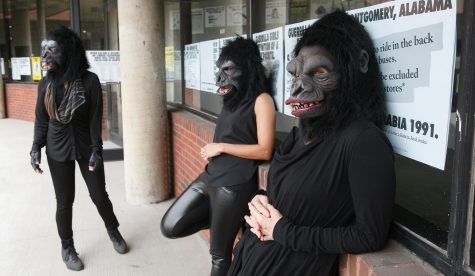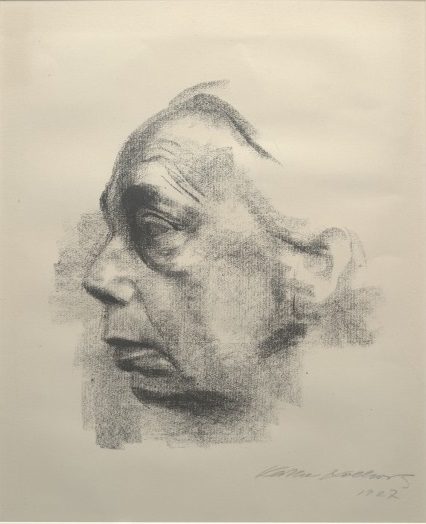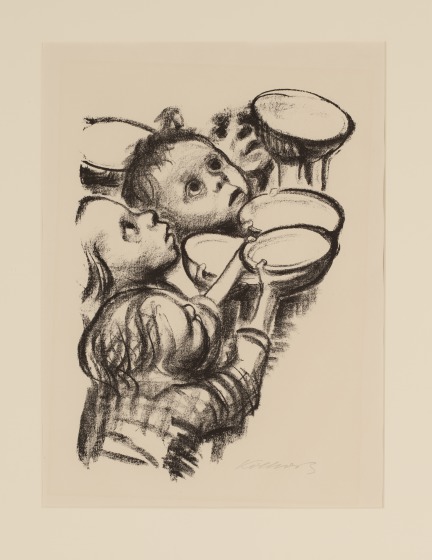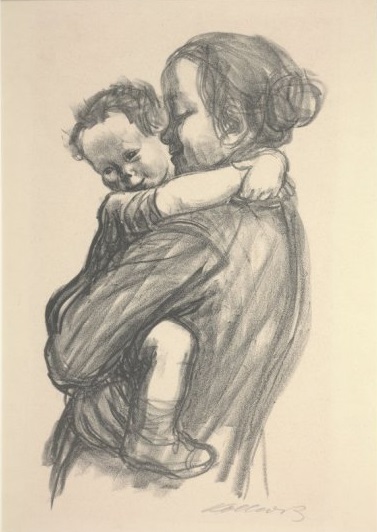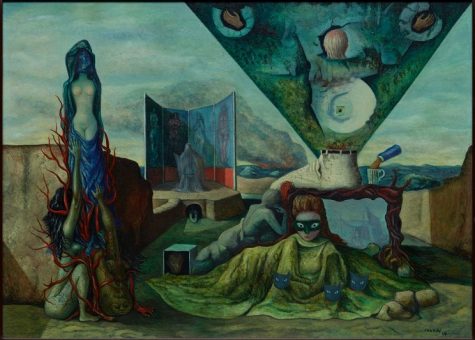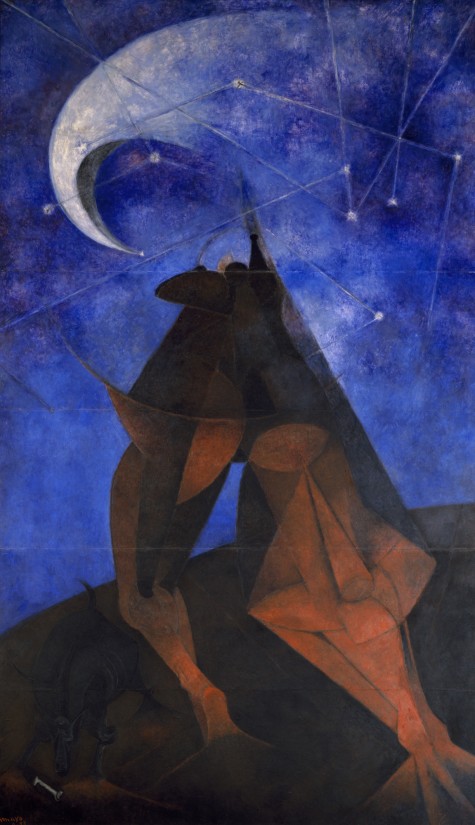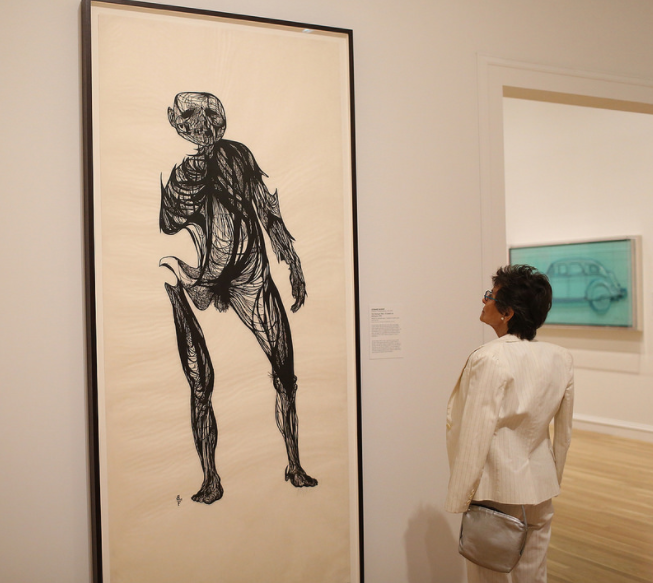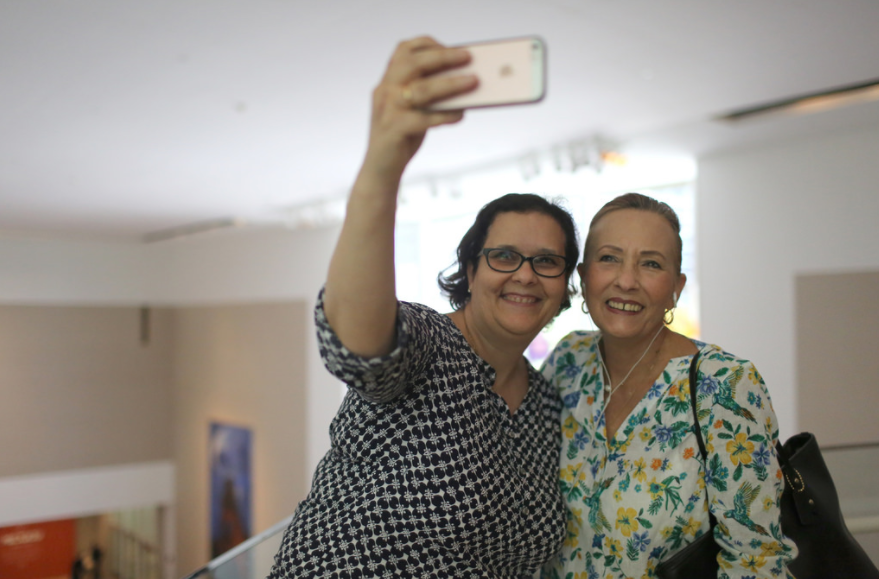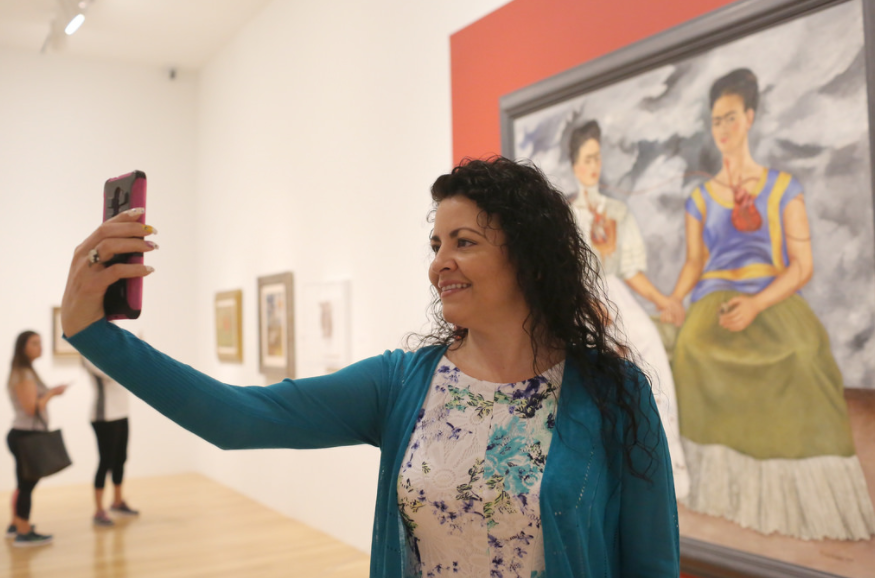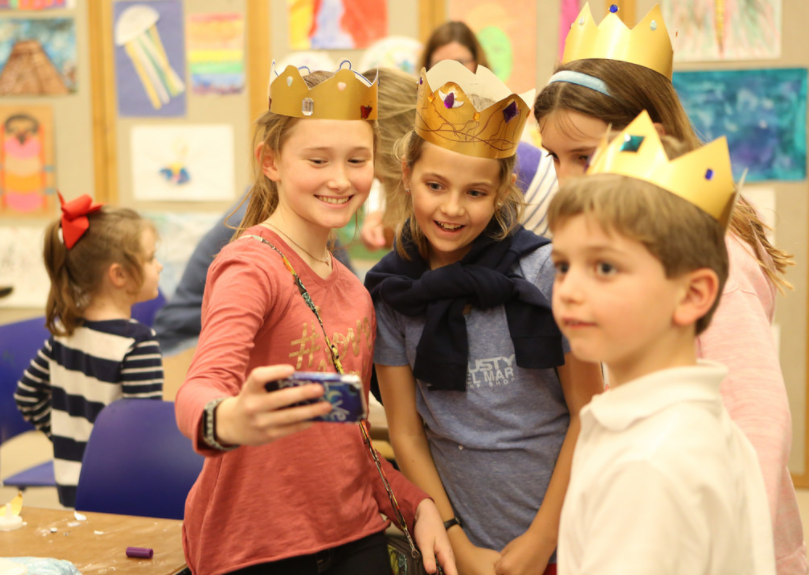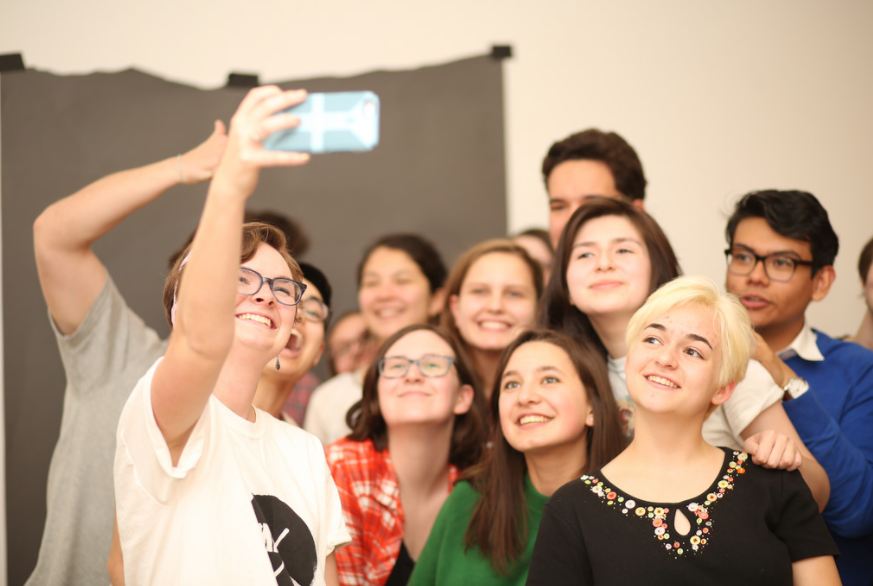Today is a big day for the moon, check out this post from 2016 to find our how you can make a camera obscura to watch the moon’s time in the lime light.
Archive for the 'Uncategorized' Category
The Two Käthes
Published August 16, 2017 European Art , Late Nights , Uncategorized ClosedTags: Dallas Museum of Art, DMA, Guerrilla Girls, Käthe Kollwitz
Join us for Late Night this Friday when we will host artist Käthe Kollwitz of the feminist activist art collective the Guerrilla Girls as part of a celebration of women artists featured in Visions of America. For more than thirty years, women artists from across the country have donned gorilla masks and joined the ranks of the Guerrilla Girls to produce public art campaigns that raise awareness about gender and ethnic discrimination in the art world and beyond. Having decided early on that the members of the Guerrilla Girls would remain anonymous, they took this opportunity to shine some limelight on great women artists of the past by assuming the names of pioneers like Käthe Kollwitz, Frida Kahlo, and Zubeida Agha.
In an interview for the Smithsonian Institution’s Archives of American Art Oral History Program, Käthe explained the origin of their pseudonyms.
“Eventually we realized that we needed individual names within the Guerrilla Girls. When we went places in a group or in pairs, we needed to be individuals in some way. So this idea came up to have dead women artists as pseudonyms, and it was a useful idea because art historians were re-finding and representing the work of a lot of women artists from history. Most of the pseudonyms that people took were artists they’d never heard of before they started and only discovered when they read up on women artists, looking for a name.”
Käthe’s own namesake, Käthe Kollwitz (1867–1945), was a German printmaker and sculptor who also addressed social injustice in her work. She also happens to be well represented in the DMA’s collection
- Käthe Kollwitz, Self Portrait, 1927, lithograph, Dallas Museum of Art, gift of Mr. and Mrs. Alfred L. Bromberg, 1953.37
- Kathe Kollwitz, 1927, Anonymous Photographer, from Kathe Kollwitz Self-Portaits, 2007_w
Kollwitz’s work is at times touching and heart-wrenching with intimate portraits of mothers with their children as well as genre scenes depicting the plight of the urban poor. Her subjects are often gaunt figures whose shadowy eyes and pained poses speak volumes about the dire circumstances under which they lived. Having endured multiple personal tragedies and both world wars, she was an artist who did not shy away from showing the realities of war, poverty, and loss.
- Käthe Kollwitz, Hungry children (Deutschlands Kinder Hungern!), 1924, Lithograph, Dallas Museum of Art, Foundation for the Arts, The Alfred and Juanita Bromberg Collection, bequest of Juanita K. Bromberg, 2000.246.FA
- Käthe Kollwitz, Boy with Arms Around Mother’s Neck, 1931, Lithograph, Dallas Museum of Art, gift of Mrs. Leon A. Harris, Sr., 1940.59
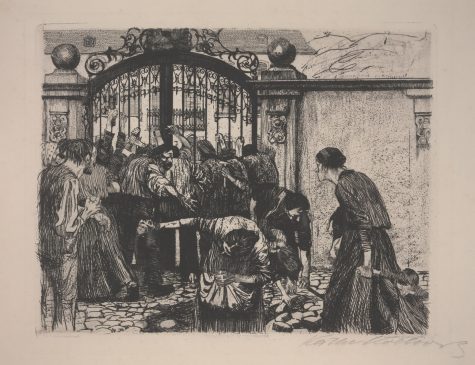
Käthe Kollwitz, Revolt (Sturm), 1897, Etching, Dallas Museum of Art, Foundation for the Arts, The Alfred and Juanita Bromberg Collection, bequest of Juanita K. Bromberg, 2000.192.FA
Remarking on how she arrived at the pseudonym Käthe Kollwitz, the artist said, “It’s very personal for everybody. Käthe Kollwitz is not my all-time favorite artist, but she’s a great role model. She was an activist as well as an artist. She didn’t believe in the expensive, fancy art system. She did a lot of cheap prints that she gave and sold very cheaply. She did a lot of work about working people, about women and children, even work about sex. She was a fierce woman artist.”
Over 70 years after Kollwitz’s death the Guerrilla Girls are continuing the practice of using art to raise awareness. Reflecting on their own 30 year legacy, Käthe will speak about favorite projects and how the group has approached activism in their work. For more information about this and other Late Night programs, visit DMA.org.
Jessie Frazier is Manager of Adult Programming at the DMA
Once Upon a Time in Mexico
Published July 12, 2017 Education , Exhibitions , Off the Wall , Uncategorized ClosedTags: Dallas Museum of Art, Diego Rivera, DMA, Frida Kahlo, José Clemente Orozco, Mexico, México 1900–1950: Diego Rivera Frida Kahlo José Clemente Orozco and the Avant-Garde
Tomorrow night, July 13, we are celebrating Mexico of the past and present with our Second Thursday program, Off the Wall to kick off our closing weekend of Mexico: 1900-1950. Since this exhibition is all about telling the stories of Mexico and the artists who documented its history and people, we thought Once Upon a Time in Mexico would be the perfect way to encapsulate the evening. We have so much going on all evening, tours, music, crafts, and more and each activity connects back and tells a story about an artwork in the exhibition.
Murals are such a large portion (literally) that connects the exhibition together, so we wanted to highlight murals as an art form. All night you will be able to watch as the artist collective Sour Grapes create a mural inspired by the exhibition on Eagle Family Plaza. Sour Grapes has been around since 2005 and you can’t drive around Dallas without seeing their work on walls and buildings. Even though we have a few murals to choose from, this one was a visitor favorite and with its bold colors and the scale of the work, you can see why.

Diego Rivera, Juchitán River (Río Juchitán), 1953–1955, oil on canvas on wood, Museo Nacional de Arte, INBA, Mexico City Assigned to the Instituto Nacional de Bellas Artes through the Sistema de Administración y Enajenación de Bienes of the Secretaría de Hacienda y Crédito Público, 2015 © 2017 Banco de México Diego Rivera Frida Kahlo Museums Trust, Mexico, D.F. / Artists Rights Society (ARS), New
Artists like, Gunther Gerzso, Leonora Carrington, and Alice Rahon, all featured in the exhibition, were important players in the Surrealist movement in Mexico. This movement encouraged artists to unlock their subconscious and use their imagination to create a new world on the canvas. Spend a few minutes with friends putting yourself into the minds of the Surrealists with the game, Exquisite Corpse. In the game, a piece of paper is folded into sections and passed around; the challenge is that each artist must work on one particular segment without having seen the others. The results are sometimes crazy and monstrous but always hilarious.
On the Before Mexico, was Mexico tours, we have Dr. Kimberly Jones the DMA’s Assistant Curator of the Arts of the Americas speaking on our Pre-Columbian collection in English and Spanish. Pre-Columbian art was an enormous influence on many of the artists represented in the exhibition. Just one example is the mural by Saturnino Herrán entitled Our Gods, which shows a group of Aztec people during a ritual to the god, Coatlicue.
To finish up your night, don’t miss Mariachi de Oro performing the upbeat music of Western Mexico. Mariachi has been around since at least the 18th century and is a large part of Mexico’s cultural history. Around the 1920’s when the piece below was painted, Mariachi music was being broadcast on the radio for the first time, and instruments like the trumpet were being infused into the arrangements because of the growing popularity of jazz and Cuban music.
Don’t miss out on a fun filled evening celebrating the closing weekend of Mexico: 1900-1950. We are going to miss this exhibition once it is gone next Monday, but thankfully, we have a few pieces that are staying with us! These images below among others will still be in the DMA’s collection and can be enjoyed many times to come after Mexico is over.
- Octavio Medellin, The Hanged One, wood, Dallas Museum of Art, Kiest Memorial Purchase Prize, Fourteenth Annual Dallas Allied Arts Exhibition, 1943.9
- Jesus Guerrero Galvan, Images of Mexico, 1950, Oil on canvas, Dallas Museum of Art, Dallas Art Association Purchase, 1951.102
- Roberto Montenegro, The Shell, c. 1936, Dallas Museum of Art, Dallas Art Association Purchase, 1951.84
- Rufino Tamayo, “El Hombre (Man),” 1953, pigment in vinyl emulsion on Masonite, Dallas Museum of Art, Commissioned by the Dallas Art Association through Neiman-Marcus Exposition Funds,1953.22, © 2012 Estate of the artist in support of Fundacion Olga y Rufino Tamayo, A.C.
Don’t forget to join us tomorrow from 5:00-9:00 p.m. for July Off the Wall: Once Upon a Time in Mexico. The cost is $5 for the public and free for DMA Members. An additional $10 ticket is required to see the exhibitions that evening.
Katie Cooke is Manager of Adult Programming at the DMA
Party Like It’s 1776
Published July 4, 2017 Exhibitions , Uncategorized ClosedTags: America, Dallas Museum of Art, DMA, Fourth of July, George Washington, Patriotic, Visions of America, Visions of America: Three Centuries of Prints from the National Gallery of Art
Are you too cool for British rule? Then celebrate the adoption of the Declaration of Independence by exploring more than 150 outstanding prints from the colonial era to the present, drawn exclusively from the National Gallery of Art’s collection. Visiting Visions of America: Three Centuries of Prints from the National Gallery of Art is how you get Fourth of July HamilDONE right. Ain’t no party like a George Washington party, because a George Washington party don’t stop! See you Tuesday friends, the DMA is open on the Fourth of July from 11:00 a.m. to 5:00 p.m.
Julie Henley is the Communications and Marketing Coordinator at the DMA.
At an arms length
Published June 21, 2017 Dallas , Social Media , Uncategorized ClosedTags: galleries, millenials, National Selfie Day, photography, selfie, smartphone, special exhibition
Are selfies a form of art? With the advent of the front facing camera, the digital age’s self portrait was born. Whether seeking social approval, documenting travels, or not wanting anyone to be left out of the picture, selfies give us a snapshot of life’s many moments. Much like paint and brush, filters, and editing apps allow one to dictate how the world see them. Genuine and doctored images are now so seamlessly intertwined that society is left to their own interpretations. Sound familiar? How many times have you felt differently about a work of art than the person next to you?
Whether you are a proponent of selfies or adversely opposed, you have to admire the forethought and skill involved in taking the perfect one. Has the 45 degree upward tilt been achieved, the most flattering light found, and the perfect filter picked? Not to mention the caption, is it vague or descriptive? Like the text on a label, does it leave one wanting more or fully informed?
This National Selfie Day try your hand (literally) at this art form in the DMA. We promise plenty of beautiful backgrounds, ambient light, and free WiFi, all for your selfie taking adventures.
Julie Henley is the Communications and Marketing Coordinator at the DMA.
In celebration of Paul Gauguin’s birthday today, we thought we would revisit one of Uncrated’s first blogs from August 2010 exploring the conservation work on the DMA’s “Under the Pandanus” painting by Gauguin.
This summer, as part of our México 1900-1950 exhibition, we are celebrating Mexico’s Golden Age of Mexican cinema with free screenings of some of the era’s most beloved and acclaimed films. I asked Alex Garcia Topete, Lead Programmer for Latino and International Programming with The Dallas International Film Festival, to share a few words about what makes this period of film so special and how these films continue to impact filmmaking today. Here’s what he had to say:
What is the Golden Age of Mexican cinema and what is its legacy in the history of film?
It’s the period between the late 30s and late 50s when Mexico became a powerhouse of cinema because of the quality of talent, technical achievements, and overall success of the now-classic films. Without the Mexican Golden Age, there would be no Scorsese, no Spielberg, no Coppola. It also established many of the stars and characters that are worldwide icons of Mexico since then.
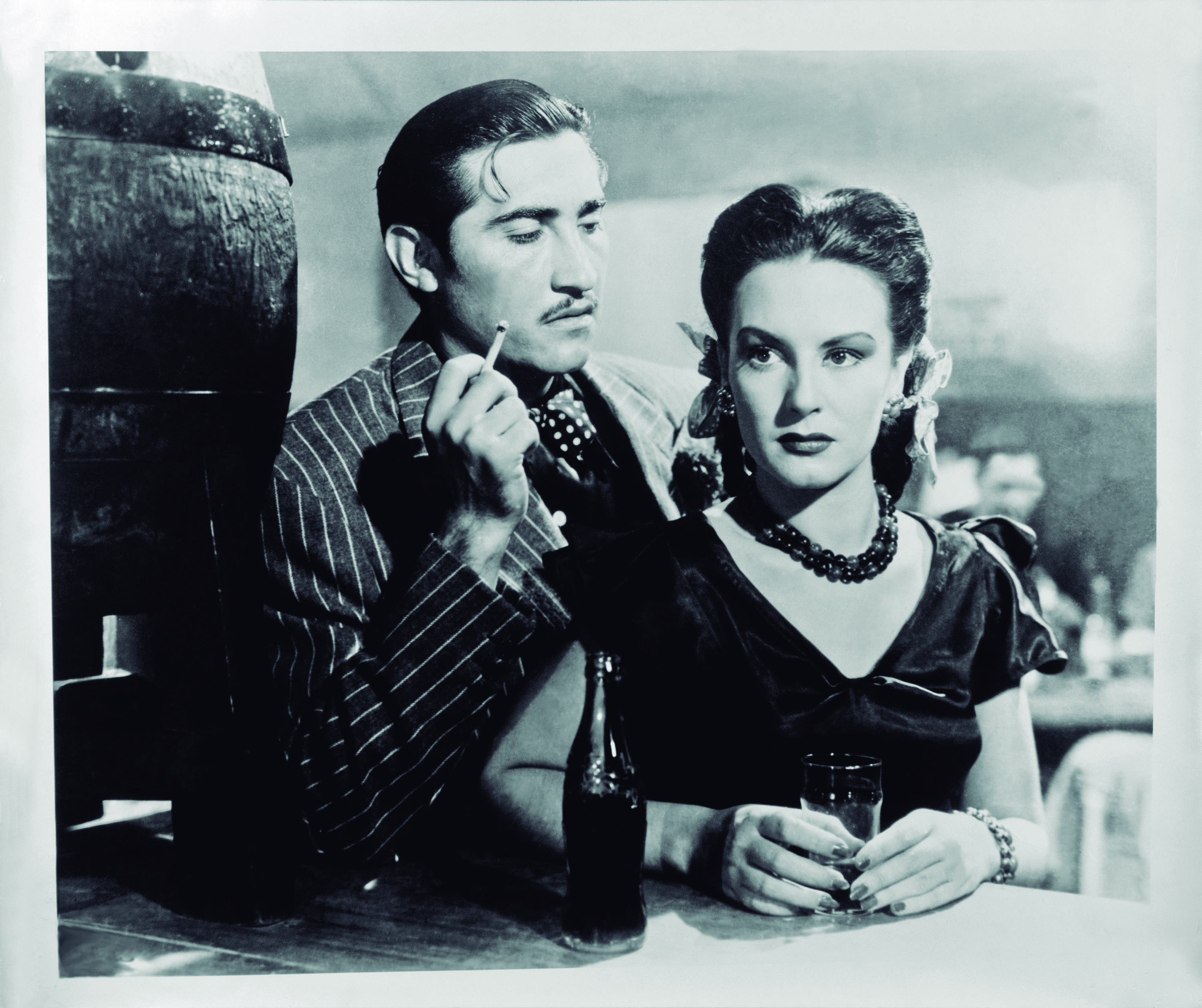
Salón México, 1949
What are some of the recurring themes and genres of films made during this period?
First and foremost, strong women are one of the constants. Even when the female lead may be a damsel waiting for her lover, she would still be the one in control and driving the narrative in most Golden Age films. The theme of family and duty also appears a lot, thanks to the changing social mores of the era. In terms of genre, the “ranch comedy” surged—funny or romantic stories that happen in rural settings, kind of a subdued western; however, every major genre had a presence in the Golden Age: film noir, screwball, musicals, biblical epics, you-name-it!
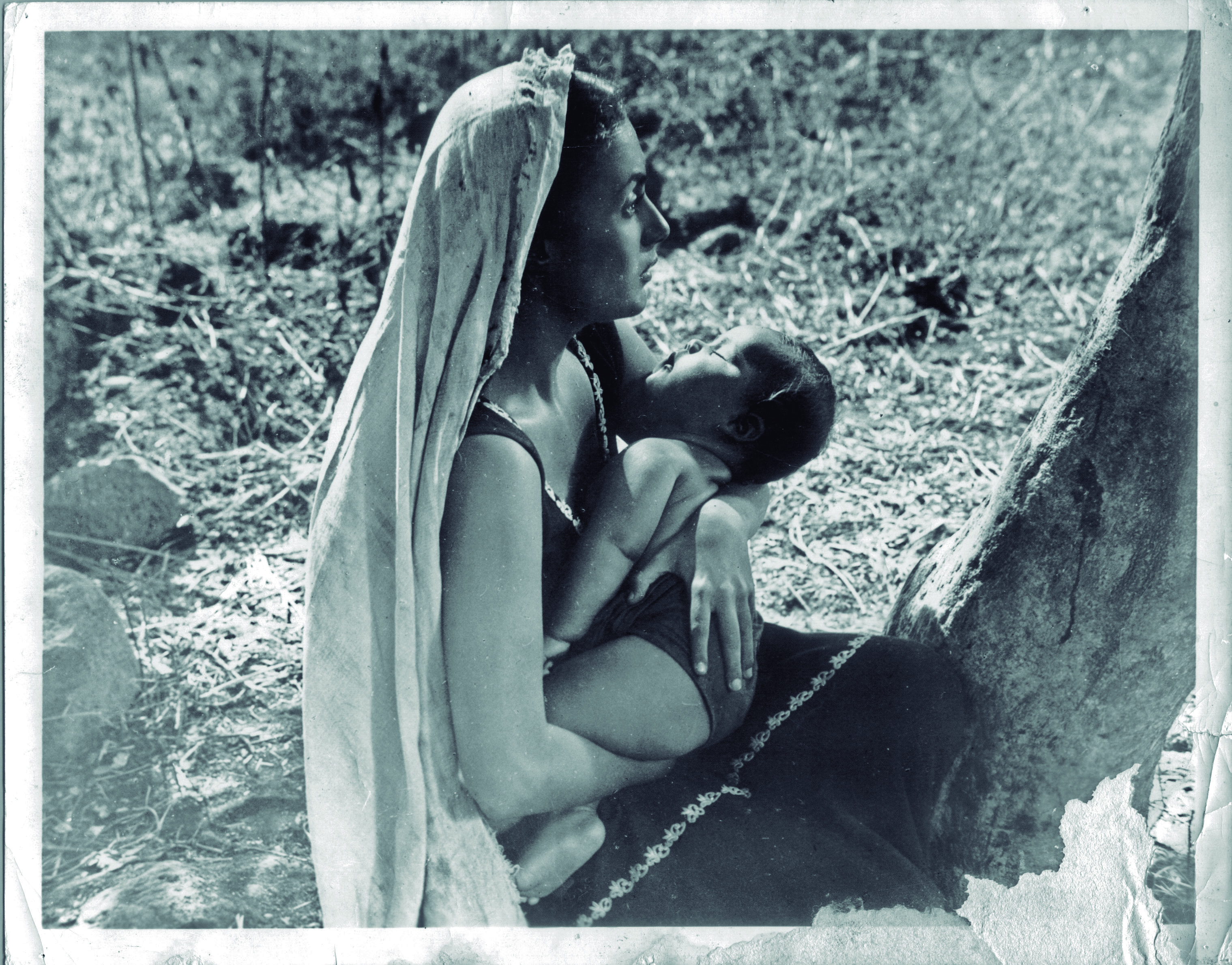
La Perla (The Pearl), 1947
What do you think modern day audiences might like about these films?
Modern audiences will appreciate the universality of the Golden Age films. Yes, they’re all emblematic of what “Mexico” means and what a lot of people think of when they hear that, but the stories and characters are all timeless and universal. Yearning lovers, matriarchs, funny goofballs—the Golden Age presented the whole world in the setting of Mexico.
What are a couple of your favorites and why?
Ahí está el Detalle is one of my favorite comedies because it was the beginning of the legacy of Cantiflas, Mexico’s Charlie Chaplin; Los Olvidados and El Ángel Exterminador because they’re Luis Buñuel at his most masterful; and Los Tres García because it’s a milestone bringing together three of the biggest stars of Mexican cinema. I could go on and on.
Check out a full lineup of film screenings at DMA.org, and don’t miss your chance to see these classics on the big screen.
Jessie Frazier is the Manager of Adult Programming at the DMA.
Nesting
Published May 29, 2017 Behind-the-Scenes , Center for Creative Connections , Installation , Uncategorized ClosedTags: Arturo’s Art & Me, Center for Creative Connections, children's activities, Family
This week, we open the new and improved Arturo’s Nest in our Center for Creative Connections (C3)! The old play areas and design were so well loved that it was time to refresh and re-imagine this beloved play-learning space for our youngest visitors. The Exhibitions team and I had the pleasure of collaborating with the Education Department to come up with a fresh design that harmonizes with the updated Young Learner’s Gallery just around the corner in C3.
Some of the changes we made include installing new carpet (with giant polka-dots) to help with ambient sound, and applying a brand-new landscape to the walls, courtesy of our Exhibitions Graphic Designer, Kevin Parmer. We’ve added a nightscape to a previously plain wall, which adds to the calming and enveloping charm of this space. For our design team, this project was a playful departure from the many ongoing exhibition design projects in the Museum galleries.

Material samples used in the Arturo’s Nest redesign
There will be a new “nest” structure (coming soon) that will also function as a reading nook, and the daytime landscape will be dotted with interactives that engage our youngest visitors’ budding aesthetic sensibilities. We invite you to explore Arturo’s Nest upon its reopening!

Arturo’s Nest space before

Arturo’s Nest space after
Skye Malish-Olson is the Exhibition Designer at the DMA.
What do Paul Revere and Andy Warhol have in common? Seemingly nothing, right? Wrong. Both of these men, who are equally renowned for different reasons, were also American artists (yes, the Paul Revere “The British are coming” fellow) responsible for depicting important moments in the nation’s history through prints. This Sunday, May 28, their works will be joined at the DMA by others from greats such as James McNeill Whistler, Mary Cassatt, Winslow Homer, George Bellows, John Marin, Jackson Pollock, Louise Nevelson, Romare Bearden, Robert Rauschenberg, Chuck Close, Jenny Holzer, Kara Walker, and many more.
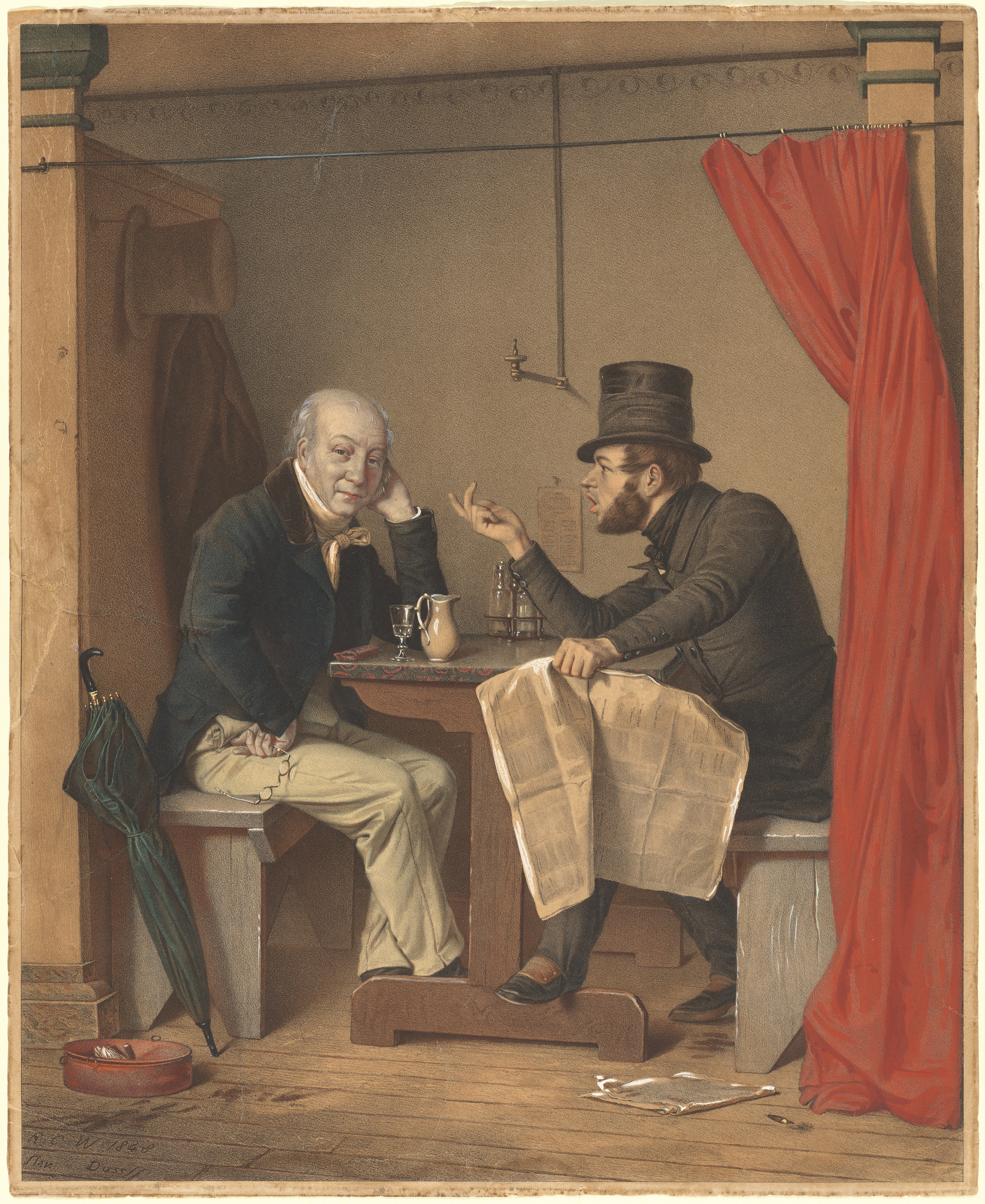
Michele Fanoli, after Richard Caton Woodville, Politics in an Oyster-House, 1851, hand-colored lithograph, National Gallery of Art, Washington, Corcoran Collection (Gift of the Estate of William Woodville, VIII)
Just in time for Memorial Day and the Fourth of July, Visions of America: Three Centuries of Prints from the National Gallery of Art takes a look at how America and its people have been represented in prints made by American and non-American artists between 1710 and 2010. As the final venue of a four-city international tour and the only other US venue, the DMA will present more than 150 outstanding prints from the colonial era to the present, drawn exclusively from the National Gallery of Art’s collection.
Lose yourself in the nation’s spacious skies and amber waves of grain through September 3, 2017.
Julie Henley is the Communications and Marketing Coordinator at the DMA.
Frida Kahlo: Fashion as the Art of Being
Published May 17, 2017 Exhibitions , Late Nights , Uncategorized ClosedTags: Dallas Museum of Art, DMA, fashion, Frida Kahlo, México 1900–1950: Diego Rivera Frida Kahlo José Clemente Orozco and the Avant-Garde, Susana Martínez Vidal
At Late Night this Friday journalist and author Susana Martínez Vidal will speak about her beautiful new book, Frida Kahlo: Fashion as the Art of Being, which looks at the iconic and carefully curated style of Frida Kahlo and the artist’s lasting influence in the worlds of fashion and art. Before her visit, I asked the author to share a few insights about this project.
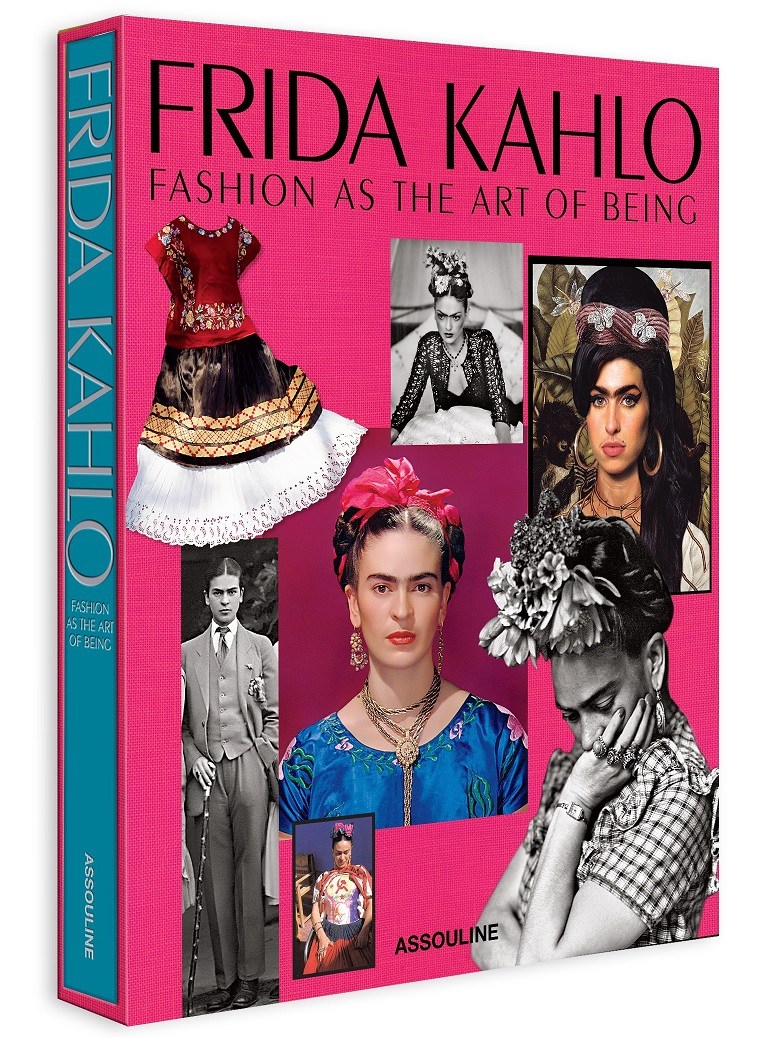
What inspired you to write a book about Frida Kahlo?
During the almost 18 years that I headed EllE Spain and attended international fashion shows, I saw Frida walk by on innumerable occasions, interpreted in diverse ways by the greatest designers in the world: Jean Paul Gaultier, Givenchy, Valentino, Karl Lagerfeld, Lacroix, Kenzo, all have paid homage to her. Countless times I witnessed her influence in music, film, and in the best international fashion magazines. The most famous actresses, models, and singers have evoked her: Monica Belluci, Naomi Cambell, Linda Evangelista, Kate Moss, Claudia Schiffer, Beyoncé, Madonna, Patti Smith, Cold Play.
In 1993 Frida Kahlo inspired the first fashion shoot I published as the director of EllE. Through the eye of Canadian photographer Michel Pérez, actress and model Patricia Velásquez, the exotic beauty for “The Mummy” saga (who along with Frida shares indigenous heritage), was transformed in an Aztec princess. Years later, I was impacted by the spring collection of the great Jean Paul Gaultier, the first of the major designers to evoke her.
It powerfully attracted my attention that a woman who was half indigenous and was not from a first world country nor from show business (she wasn’t an actress, singer, or dancer) had gatecrashed into ranking among the most iconic women of the 20th century, next to Marilyn Monroe, Jackie Kennedy or Maria Callas.
In 2012, shortly after relocating to live in Mexico, the Huffington Post asked me to write a blog about the exposition of Frida Kahlo’s clothing that had recently opened. Seeing this fantastic showcase in the Casa Azul Museum, I started to remember all the images of Frida from the runways and decided that the subject deserved to be explored more profoundly. At the end of the article I expressed my desire that one day a book would speak to the influence of Frida Kahlo on fashion. It was a challenge I gave myself to dare myself to take the step. For months the article was one of the most read on Huffington Post, and this convinced me that Frida lived even though she had died more that half a century prior. Frida Kahlo: Fashion As the Art of Being is the realization of that dream.
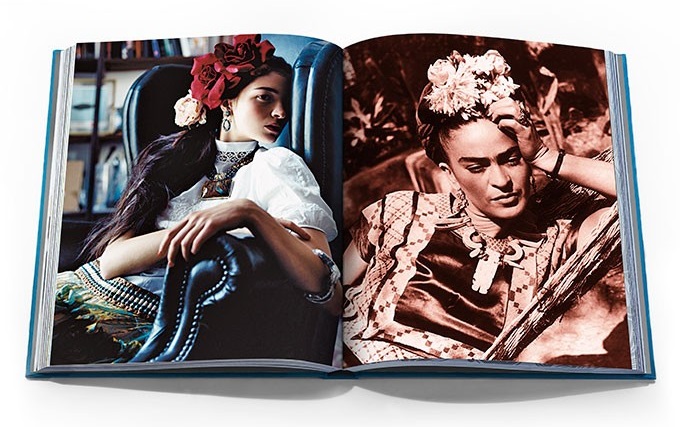
In your opinion, what is the biggest lesson Frida taught us about fashion, art, or life?
Her determination to transform pain into beauty, while being an imperfect beauty, motivated her to build an image that she cared for and cultivated in order to elevate her self-esteem. She used fashion like therapy, emphasizing her defects to develop her own hallmark image and identity. The more pain she was in, the greater she made herself up. At the end of her life she dressed as if going to a party.
Her fans applaud her paintings because they admire her story, and therefore you cannot separate her life from her work. Like Stephen W. Hawking, she is someone who knew how to transform her limitations into opportunities. In both situations, their disabilities have transformed in aids that encourage them to focus on there abilities. Certainly, she was her finest work of art.
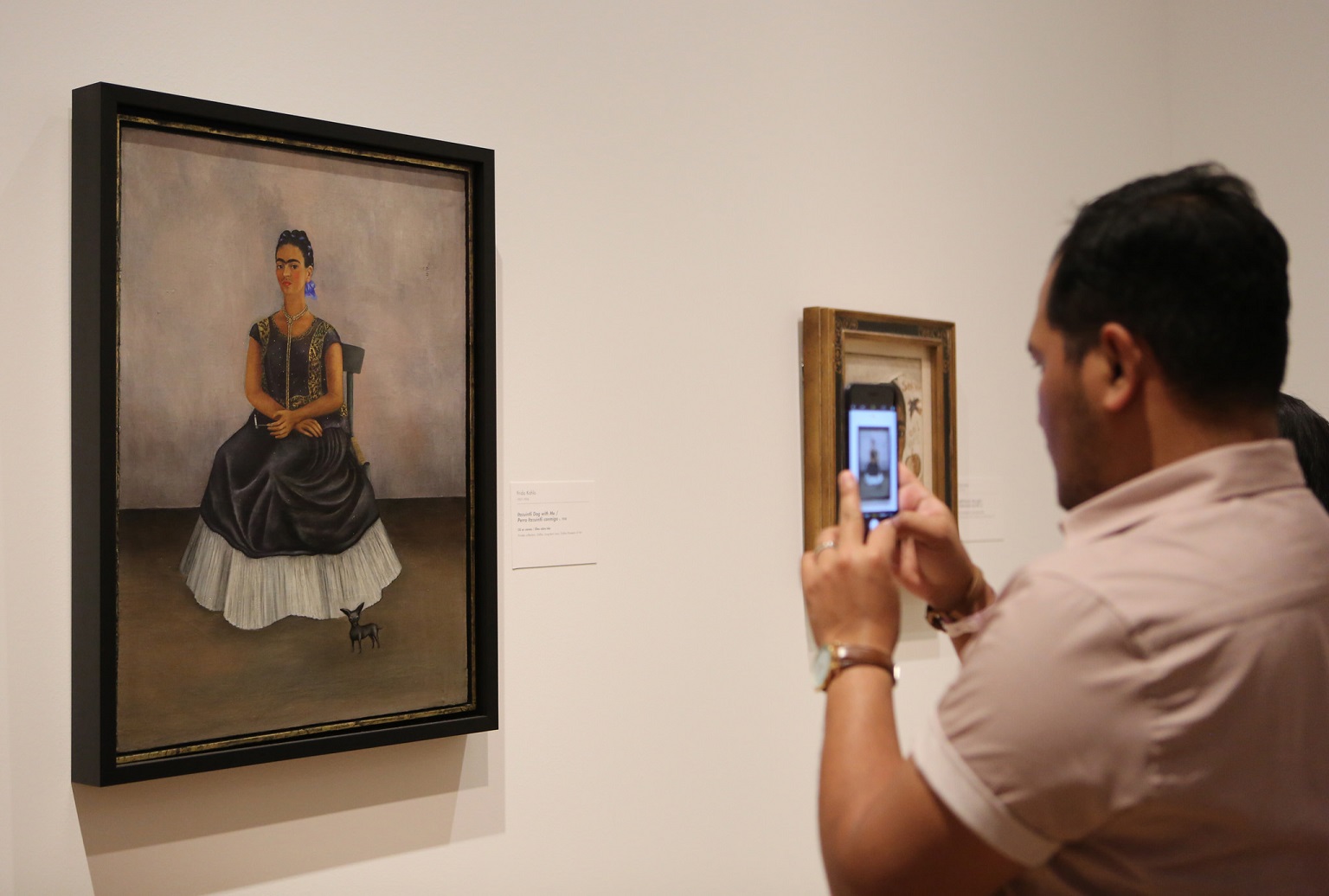
Do you see the fashion world’s appropriation of her style as honoring her, exoticizing her–both?
Perhaps both: Fashion has resurrected Mrs. Kahlo, to give her the glory she didn´t have during her life.
Since the beginning, the idea of the book has been to show the influence of Frida Kahlo in contemporary fashion and pop culture and why she continues to appear so modern in the 21st century.
My objective has been to unravel fashion’s constant obsession with Frida Kahlo, despite being a field which by definition is always in constant motion, and decipher why it is that her style continues to provoke an irrepressible appeal the world over.
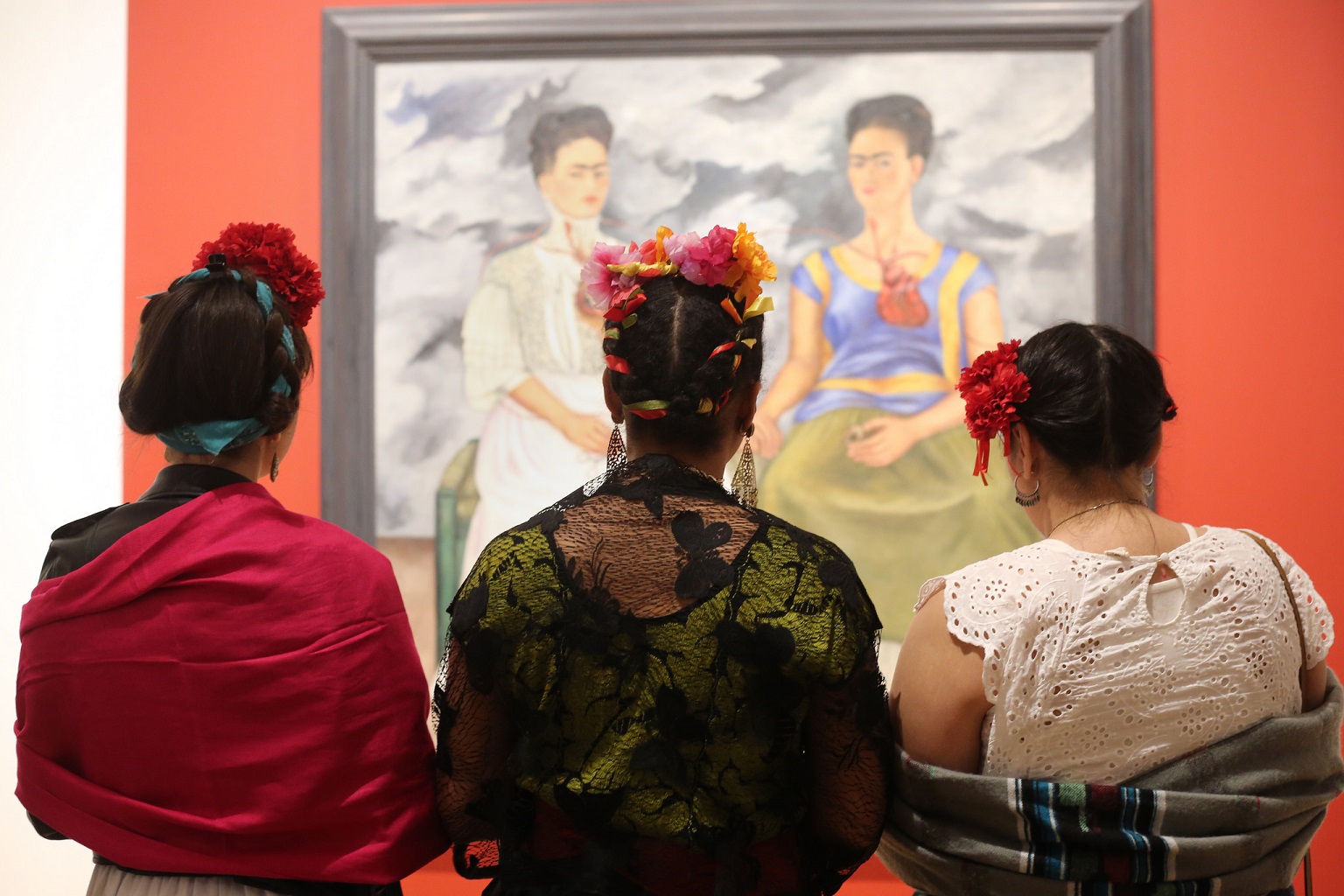
Join Susana Martínez Vidal this Friday for talks in both English and Spanish and pick up a copy of Frida Kahlo: Fashion as the Art of Being, available for purchase in the DMA store.
And let Frida inspire your own fashion – come dressed like Frida Kahlo on May 19 and your Late Night ticket will be $5.
Jessie Frazier is Manager of Adult Programming at the Dallas Museum of Art.
